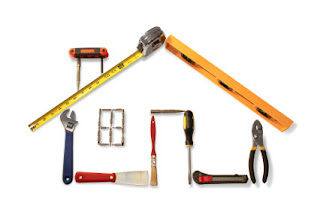Recently we reported on a round table meeting convened by the Minister for Innovation and Better Regulation (which includes Fair Trading) to discuss options for longer term residential tenancies. One of the ideas that was kicked around at the round table was that if landlords agreed to offer longer term leases they should get something in return – for example, tenants taking on the responsibility for repairs and maintenance of the premises.
We don’t think tenants giving up their established right to repairs is a very good idea.
In general housing available to renters is of lower quality than housing for owner occupiers. It is more likely to be in need of repairs, and almost three times more likely to require ‘essential and urgent’ repairs (ABS 2002).
So renters who trade away their right to repairs, if allowed, should generally expect that they will need to front up for repair costs through the year. But how much?
Estimating repair costs for a rental property is not an easy ask – the age of the house, size, fixtures, and number of people who might be living in it all need to be taken account of.
Property management ‘experts’ advise landlords to put aside funds for repairs and maintenance costs each year. They offer a range of methods to calculate what this amount should be, including for example:
- a percentage (e.g. 5%) of rental income
- ‘the 1% rule’, i.e. a percentage of the value of the property
- ‘the square metre’ rule (putting aside say $10 for every square metre)
- 5% of rental income: $1,430 annually
- 1% of value of property: $9,000 annually
- ‘Square metre rule’: $3,000 annually
Alternatively a tenant could look at how much has previously been spent annually on repairs for rental homes. The most recently available data on this is from the Australian Tax Office from 2013 – 2014. It indicates that around 75% of NSW landlords did repairs to their rental properties during this period and on average they spent around $1,200 (if you are keen to look at these numbers in closer detail you can download the 2013 - 2014 ATO tax statistics on rental income here). This tells us how much landlords claimed as deductible repair expenses during this period (so a rough guide to how much was actually spent by landlords over the year), but might not be the most accurate indicator of how much should have been spent on repairs each year.
Renters often call up their local Tenant Advice and Advocacy Service because their landlord is avoiding or attempting to minimise the amount they spend on repairs for a rental property. Perhaps a more accurate figure then comes from an older source – the ABS Australian Social Trends report on ‘Housing Stock: Housing condition and maintenance’ from 2002. This reports that on average an owner-occupier household spent $1960 each year (i.e. this is the amount home owners spent repairing the home they live in). Allowing for inflation this would suggest tenants could more reasonably expect to pay around $3,115 every year on repair and maintenance costs.
These figures are averages. So while some tenants who agreed to take on repair costs during their tenancy might expect to pay less, some could be facing considerably more.
Of course, tenants will be hit harder by repair costs than their landlords were. Repairs undertaken by landlords for a rental property can be claimed as a deductible expense against a landlord’s taxable income – so landlords effectively pay less to repair the property than a tenant would.
And the impact of taking on repair costs in tenancies would not be felt equally by all tenants. Low income tenants would be disproportionately hit by repair and maintenance costs. They generally rent older, lower quality housing - but while their housing or the fixtures within it might be of a lower standard, it won’t necessarily cost them any less to repair or maintain the property. In fact they will likely face repair and maintenance costs more frequently, and have to pay more for these repairs (ABS 2002).
Let’s look at some common scenarios regarding repairs while renting. What could each of these end up costing a tenant?
Problem: Your phone line or internet is playing up
Costs start from: Phone technician (Telstra?) call out costs start at around $150
Problem: Toilet clogged up or leaking
Costs start from: Plumber call out costs start at around $150
Problem: Gas oven won’t light
Costs start from: Electrician call out costs start at around $150
Problem: hot water system’s broke
Costs start from: Electrician call out costs start at around $150
Problem: Cockroaches start creeping out of the woodwork
Costs start from: Professional pest control packages start from around $149
Problem: Lock not locking
Costs start from: Locksmith call out costs start at around $135
These are just the starting costs. In each example a spare part, or additional labour could be required. Perhaps a fixture (dishwasher, ceiling fan, oven, etc) needs to be replaced altogether – so just start adding on the dollars from there.
Many tenants are already close to or at their budget limit for housing costs in rent (especially given the current lack of affordable rentals across NSW). Tenants may not have the financial resources to attend to repair and maintenance issues as and when they occur. Perhaps not even for the duration of their lease. Instead they may be forced to live with housing in a state of disrepair throughout the remainder of their lease, and then be hit up with a very large bill to complete these repairs when they move out.
Tenants certainly want more security. They want stability so they can confidently make a home for themselves and their family in their rented housing. They shouldn’t be forced to trade away established rights at considerable cost just to get this.
Problem: Toilet clogged up or leaking
Costs start from: Plumber call out costs start at around $150
Problem: Gas oven won’t light
Costs start from: Electrician call out costs start at around $150
Problem: hot water system’s broke
Costs start from: Electrician call out costs start at around $150
Costs start from: Professional pest control packages start from around $149
Problem: Lock not locking
Costs start from: Locksmith call out costs start at around $135
These are just the starting costs. In each example a spare part, or additional labour could be required. Perhaps a fixture (dishwasher, ceiling fan, oven, etc) needs to be replaced altogether – so just start adding on the dollars from there.
Many tenants are already close to or at their budget limit for housing costs in rent (especially given the current lack of affordable rentals across NSW). Tenants may not have the financial resources to attend to repair and maintenance issues as and when they occur. Perhaps not even for the duration of their lease. Instead they may be forced to live with housing in a state of disrepair throughout the remainder of their lease, and then be hit up with a very large bill to complete these repairs when they move out.
Tenants certainly want more security. They want stability so they can confidently make a home for themselves and their family in their rented housing. They shouldn’t be forced to trade away established rights at considerable cost just to get this.














